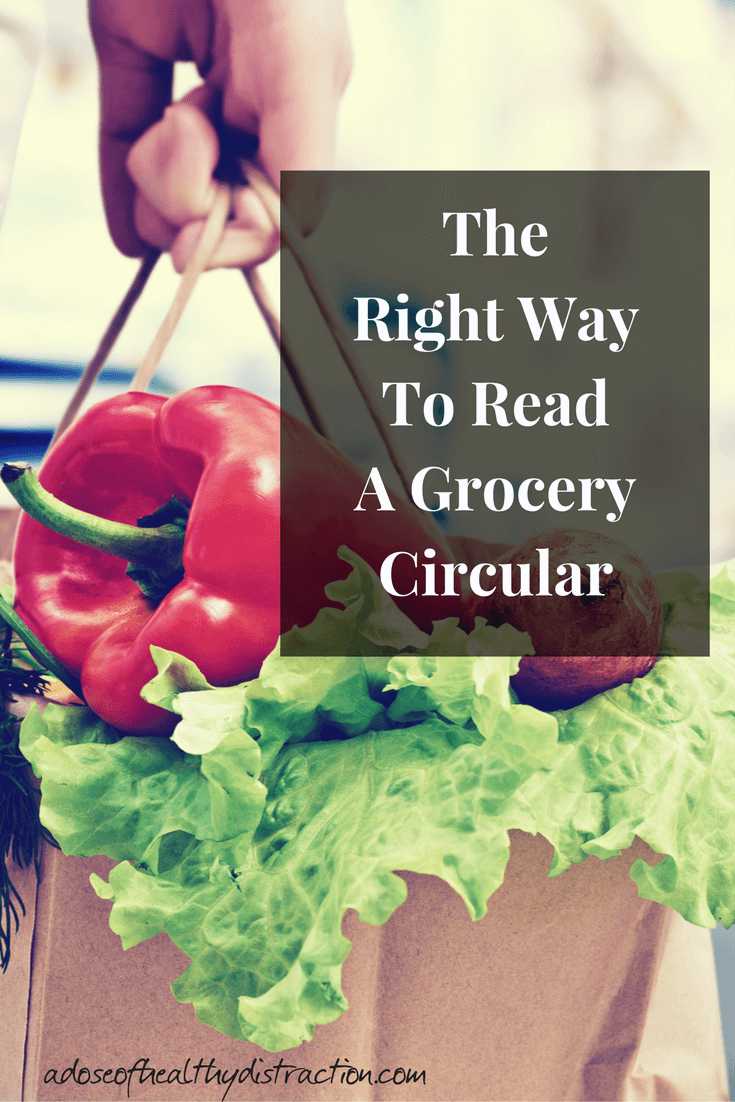
With my Meal Planning clients I always say to start by going through your pantry. I will do a post about my own pantry in the near future. But for now, I want to show you how to read a grocery circular.
Circulars exist almost everywhere. Small grocers have them as well as large grocers. On the surface these online and paper-based advertisements seem pretty harmless, maybe even helpful. And they can be helpful, if you know what to do with them.
Let me share with you some of my tips for the right way to read a grocery circular.
Look For Deals on Frozen Veggies/Fruit
Produce is what rounds out your meals after you choose your protein. In the dead of winter fresh produce is expensive. You can get fresh citrus at a decent price, but the good stuff like berries and organic greens is pricey.
Every winter I stock my fridge with frozen vegetables. Sometimes I steam them, other times I stir fry them. Either way I am saving a bundle by looking through grocery circulars.
Compare Meat Prices
If you buy your meat from a grocer I suggest comparing the prices of your preferred cuts before you shop. In the example below I found a pretty good price for beef tenderloin. I immediately went to the competitor’s website to make sure it was really a good price. (It was.)
The same rule applies to poultry and seafood. Make sure you read the fine print on the circular. Check out the shrimp example below. The teeny tiny print says that the shrimp are sold in 2 lb bags.
Imagine how annoyed you would be if you only planned to buy 1 lb of shrimp for your recipe and had not read the fine print. (Welcome to my world.)
Beware Store Veggie and Fruit Trays
Every single time I have paid for a store-made tray I have been disappointed. It is much easier and more cost effective to buy the vegetables and/or fruit and chop it yourself. Buy a container of hummus, or better yet make your own.
Is that annoying? Ummmm yes! But at least you know who was breathing on your food and what is in it. It is important to know what you are putting in your body.
Ignore “Extra Point” Specials
See example below. My local grocer offers gas points to buy certain products. Most of the products included in this special offer are 2/$5 or 2/$6. That wouldn’t be so bad except I am not willing to pay $2.50 or $3.50 for those particular products.
That is full price! So you are paying full price for a few items to get extra gas points. NO.
Do Not Spend Extra Money to Save Money
See example below. You have to spend $20 to save $6. HUH? Not only is this totally confusing but most of the items are not something you want to stock your pantry with. If you were buying staples I would feel differently.
Individually wrapped cheese slices are not a pantry staple.
This makes me almost as mad as the “must buy 12” policy I rant about in the video below. Unless you have 8 children, you do not need 12 (or 10) of anything in a can.
Do you utilize grocery circulars?
Any tips on how to plan your shopping tips ahead?

